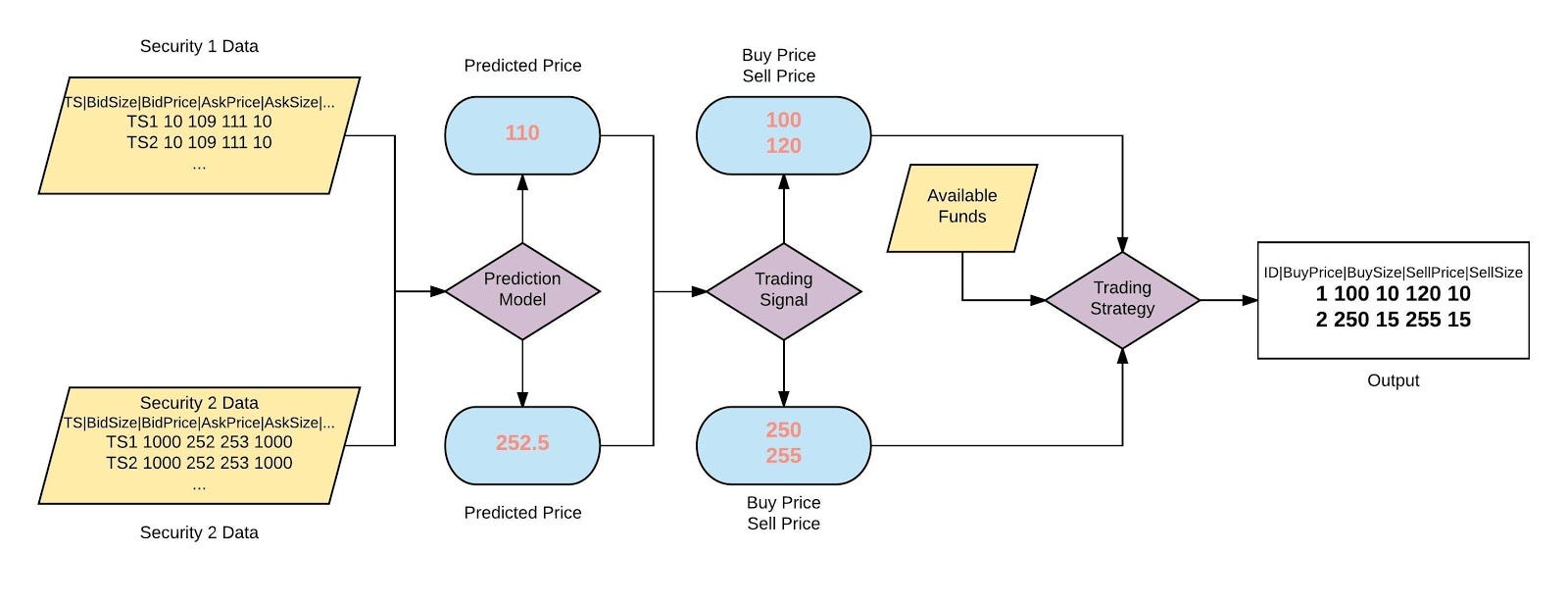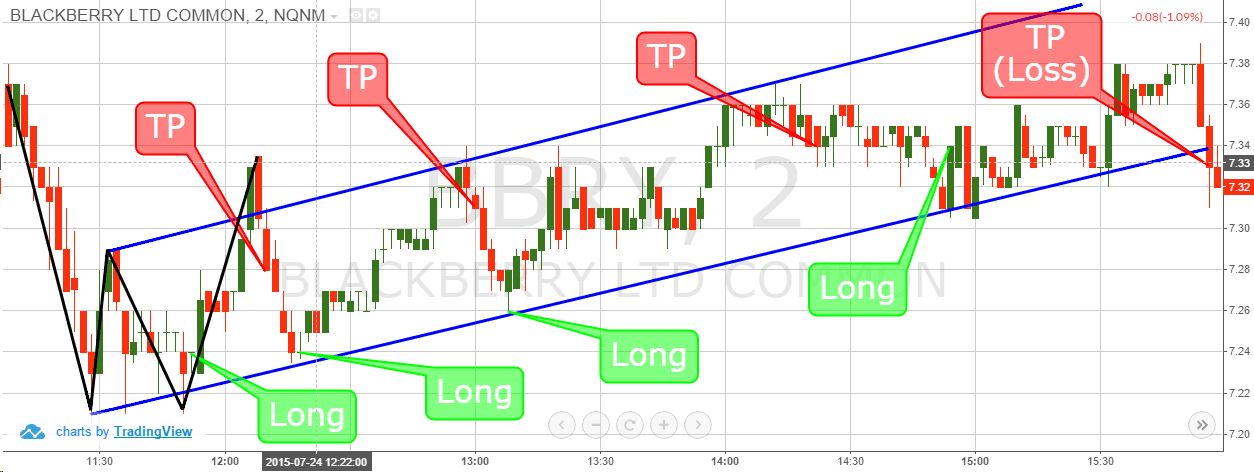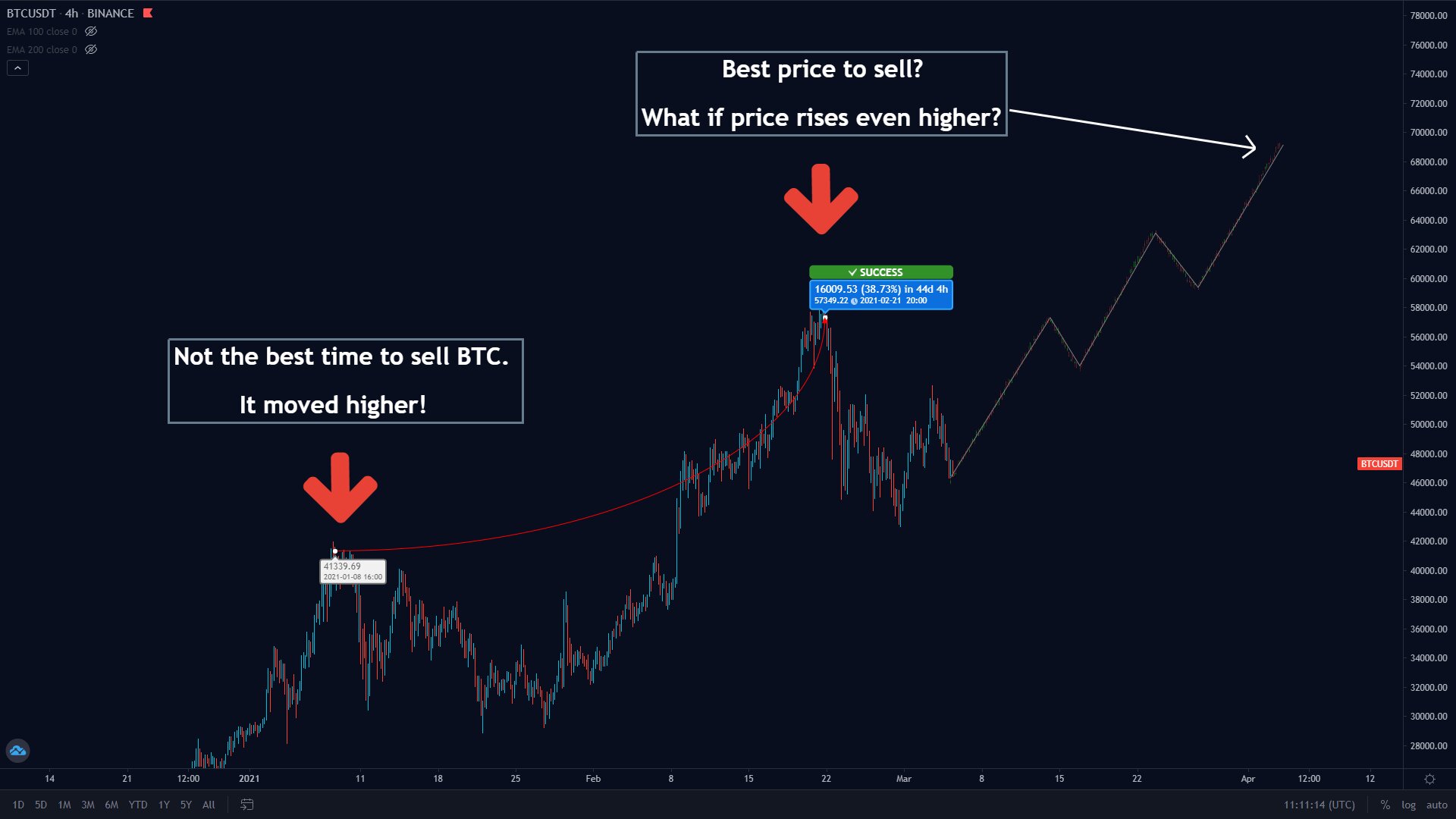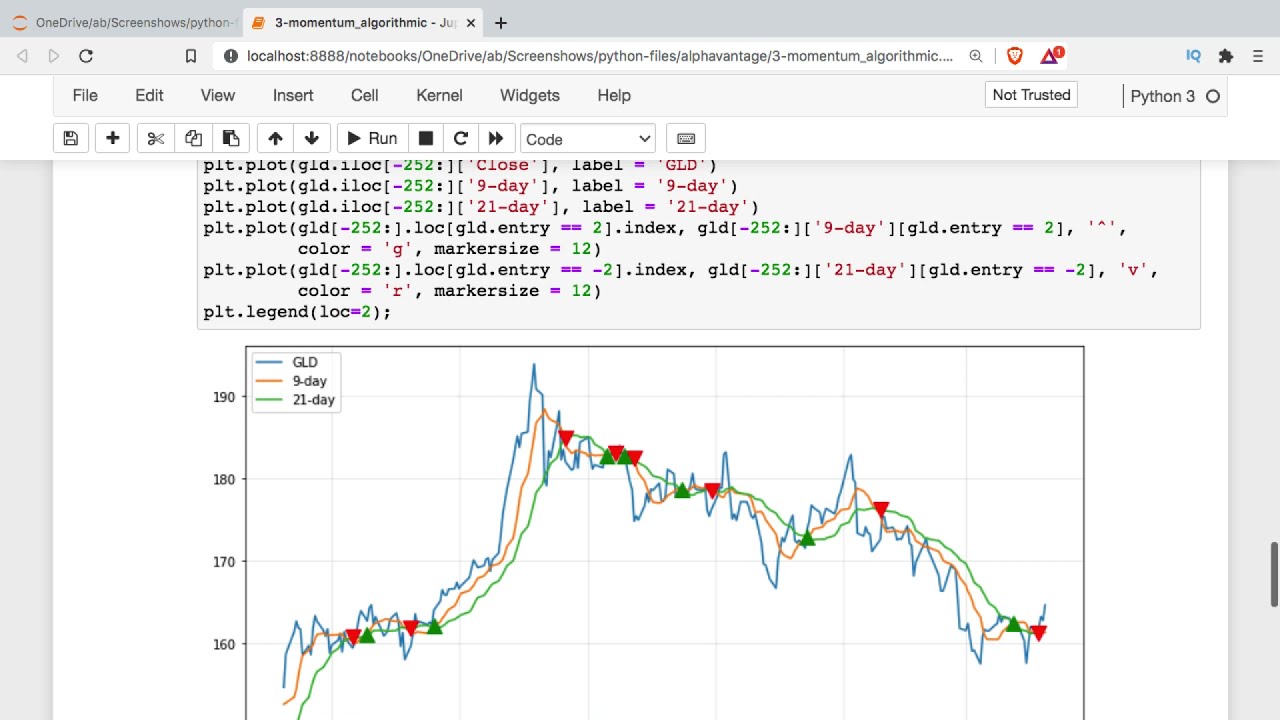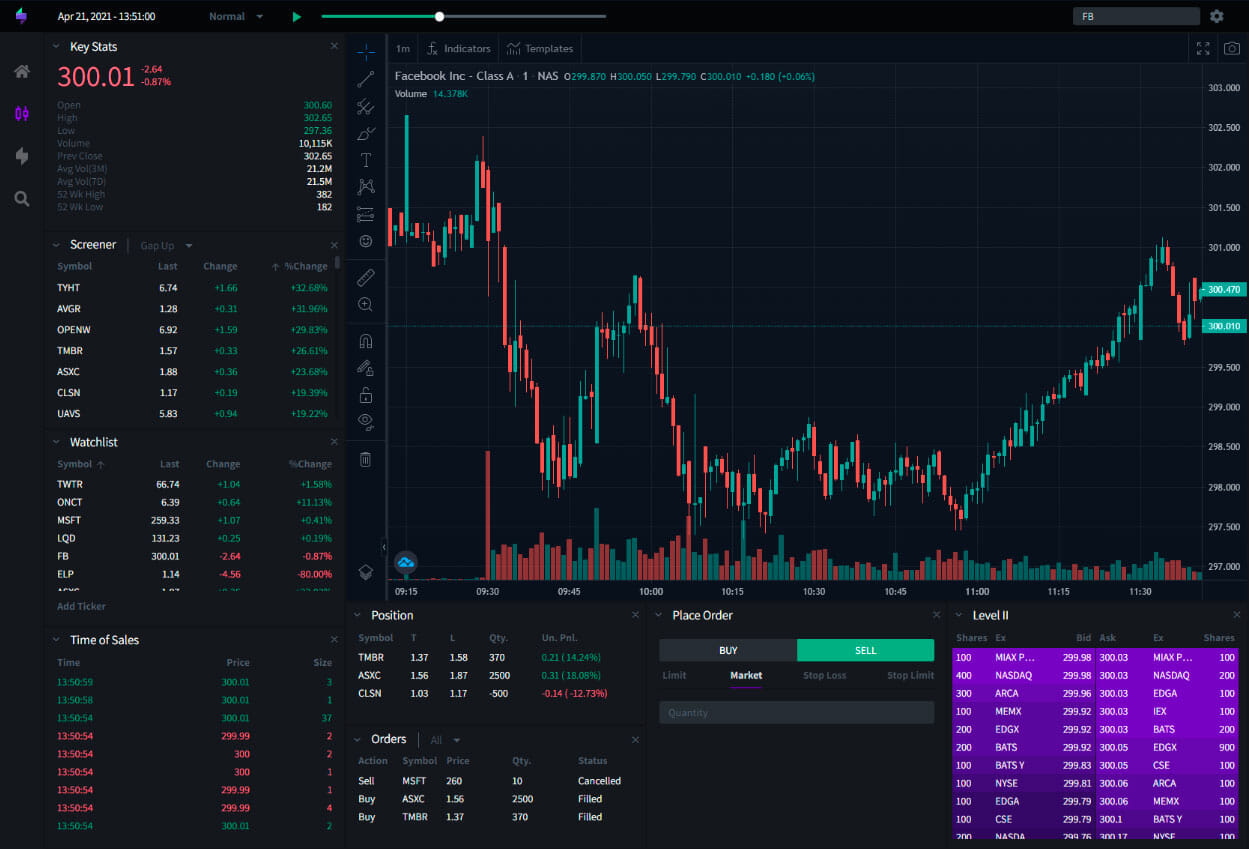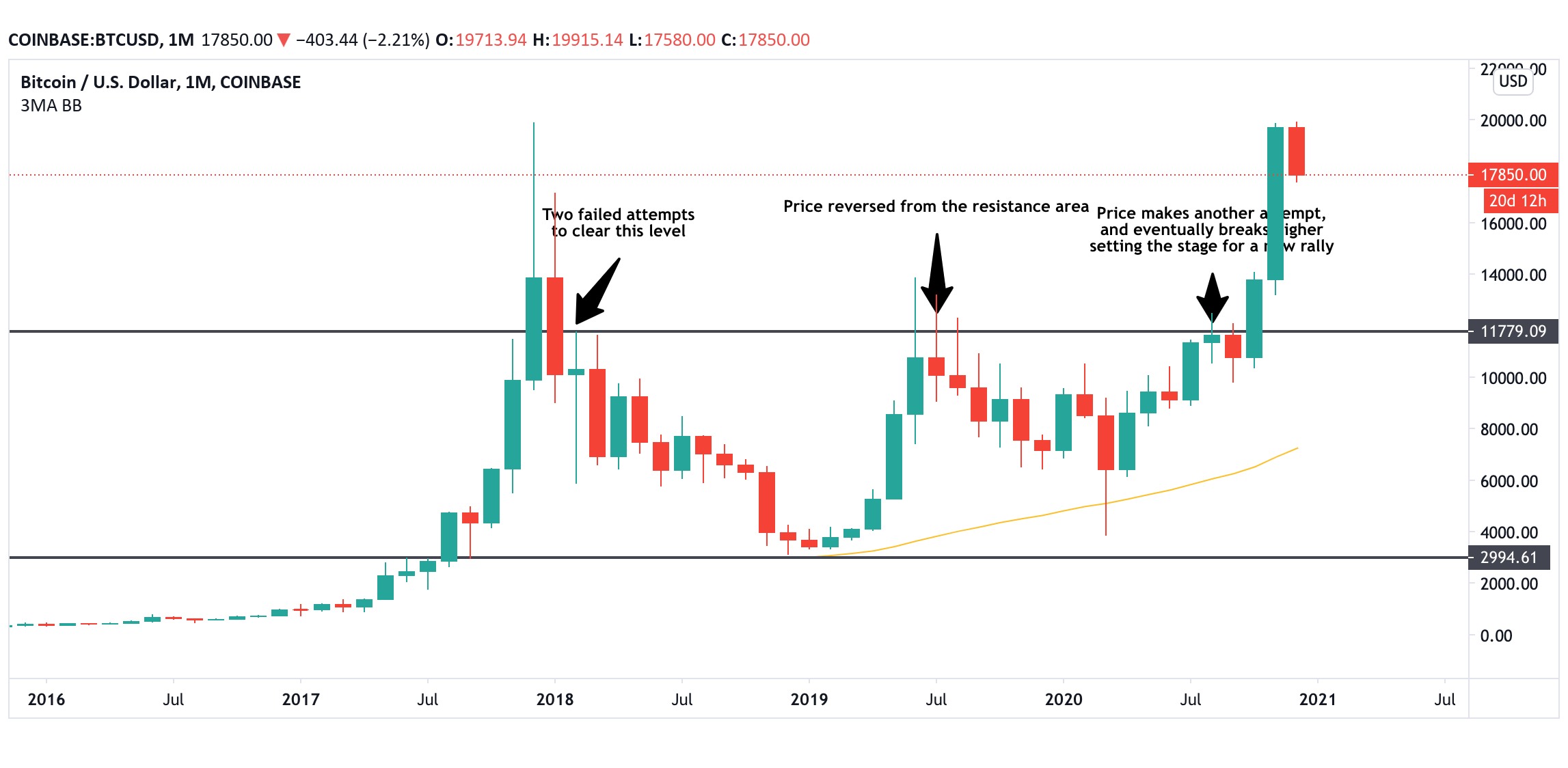Introduction
Welcome to our guide on how to develop a successful trading strategy. Whether you are a novice trader looking to enter the exciting world of financial markets or an experienced trader wanting to refine your approach, having a well-defined trading strategy is crucial for consistent profitability. A trading strategy serves as your roadmap, providing structure and discipline in your decision-making process.
By developing a trading strategy, you can approach the markets with a sense of confidence and clarity, rather than relying solely on gut feelings or impulsive trades. A well-crafted strategy will help you identify high-probability trade setups, manage your risk effectively, and optimize your entries and exits.
In this guide, we will walk you through the essential steps involved in developing a trading strategy that aligns with your goals and risk tolerance. We will cover important topics such as understanding the basics of trading, defining your goals, selecting the right timeframe, analyzing market trends and patterns, choosing suitable indicators, developing entry and exit rules, backtesting and evaluating your strategy, making adjustments and refinements, managing risk and money, and finally, putting your strategy into practice.
Whether you are interested in day trading, swing trading, or long-term investing, the principles discussed in this guide can be applied to various trading styles. It is important to note that there is no one-size-fits-all approach to trading. Each trader is unique, and your strategy should be customized to your individual preferences, trading style, and risk appetite.
Throughout this guide, we will provide practical tips and insights to help you develop a robust trading strategy. We encourage you to take the time to understand each step and apply them to your own trading journey. Remember, developing a trading strategy is an ongoing process that requires dedication, adaptation, and continuous learning. With the right mindset and a well-defined plan, you can improve your trading results and increase your chances of long-term success.
Understanding the Basics
Before diving into the complexities of developing a trading strategy, it is essential to have a solid understanding of the basics of trading. Familiarize yourself with the fundamental concepts and terminologies to lay a strong foundation for your strategy development process.
First and foremost, grasp the concept of the financial markets you wish to trade in. Whether it’s stocks, forex, commodities, or cryptocurrencies, learn about the factors that influence price movements, market participants, and the overall market structure.
Next, familiarize yourself with the different types of analysis used in trading. Technical analysis involves studying historical price data, charts, and indicators to forecast future price movements. On the other hand, fundamental analysis focuses on evaluating the financial health and performance of companies or economies to identify investment opportunities.
Another crucial aspect to understand is risk management. The potential for gains in trading comes hand in hand with the risk of losses. Implementing risk management techniques, such as setting stop-loss orders and managing position sizes, is vital to protect your capital and prevent catastrophic losses.
In addition to risk management, psychology plays a significant role in trading. Emotions can cloud judgment and lead to impulsive decisions. Develop emotional discipline and learn to control fear and greed, which often drive irrational trading behaviors.
Lastly, it’s important to understand the different types of trading styles. Day trading involves executing multiple trades within a single day, taking advantage of short-term price fluctuations. Swing trading involves holding onto positions for a few days to weeks, profiting from medium-term trends. Long-term investing focuses on buying and holding assets for extended periods, capitalizing on the potential for long-term growth.
By grasping these fundamental concepts, you will have a solid foundation on which to build your trading strategy. Understanding the basics will help you make informed decisions, analyze market conditions effectively, and adapt your strategy to different market environments.
Defining Your Goals and Risk Tolerance
One of the critical steps in developing a trading strategy is defining your goals and assessing your risk tolerance. Having a clear understanding of what you aim to achieve and how much risk you are willing to take on will guide the design and implementation of your strategy.
Start by defining your trading goals. Are you looking to generate a consistent income from trading, or are you aiming for long-term capital growth? Do you have specific financial targets in mind, such as a certain percentage return on investment? Clarifying your goals will help you align your strategy with your desired outcomes.
Once you have defined your goals, it is crucial to assess your risk tolerance. Every individual has a unique level of comfort with taking risks, and it is essential to identify where you stand on the risk spectrum. Consider factors such as your financial situation, time horizon, and emotional resilience when assessing your risk tolerance.
One common approach to determining risk tolerance is to ask yourself how much you are willing and able to lose per trade or overall portfolio. This can help you set appropriate risk management parameters, such as the percentage of capital you are willing to risk on each trade or the maximum drawdown you are willing to tolerate.
Additionally, consider the impact of potential losses on your financial well-being and emotional state. Are you emotionally equipped to handle market volatility and the occasional losing streak? Understanding your risk tolerance will help you avoid taking on excessive risk or making impulsive decisions that can jeopardize your trading capital.
It’s important to note that risk tolerance is not fixed and may change over time. As you gain experience and become more confident in your trading abilities, you may be comfortable taking on more risk. Alternatively, a change in financial circumstances or a personal situation may warrant a reassessment of your risk tolerance.
By defining your goals and assessing your risk tolerance, you will have a clear understanding of your trading objectives and the level of risk you are comfortable with. This knowledge will guide the development and implementation of your trading strategy, ensuring that it is aligned with your desired outcomes and risk profile.
Choosing the Right Timeframe
When developing a trading strategy, one crucial decision to make is selecting the right timeframe to trade. The timeframe you choose will influence the types of trades you take, the frequency of your trades, and the level of monitoring required. It is essential to consider your trading style, availability, and desired level of involvement in the markets.
There are various timeframes to choose from, ranging from ultra-short-term to long-term. Here are some common timeframes and their characteristics:
1. Scalping: Scalping involves taking quick trades and aiming to profit from small price movements. Traders who scalp typically focus on very short timeframes, such as seconds or minutes. This style requires intense focus, quick decision-making, and the ability to handle high trading volumes.
2. Day Trading: Day traders aim to capture intraday price fluctuations and close all positions before the market closes. Day trading timeframes typically range from a few minutes to a few hours. This style requires active monitoring of the markets and the ability to make swift trading decisions.
3. Swing Trading: Swing traders aim to capture medium-term trends that can last from a few days to several weeks. This style allows for more flexibility and reduced monitoring compared to scalping and day trading. Swing traders often analyze higher timeframes, such as 4-hour, daily, or weekly charts, to identify potential entry and exit points.
4. Position Trading: Position traders take long-term positions and aim to profit from significant market moves that can last for weeks, months, or even years. Position traders often analyze higher timeframes, such as daily, weekly, or monthly charts, and make fewer trades compared to other styles. This approach requires a more patient and long-term mindset.
When choosing the right timeframe for your trading strategy, consider factors such as the amount of time you can commit to trading, your personality traits, and your risk tolerance. If you have a full-time job or other commitments that limit your availability, shorter-term timeframes may not be suitable.
Additionally, think about your comfort level with market volatility. Shorter timeframes generally involve more frequent and shorter-term price fluctuations, which can result in higher levels of volatility. If you are averse to rapid price movements, longer timeframes may be more suitable for you.
It is worth noting that you can have multiple strategies for different timeframes or even combine different timeframes within a single strategy. It is not a one-size-fits-all approach, and finding the right timeframe(s) may require some experimentation and adjustment based on your trading goals and preferences.
By carefully considering your trading style, availability, and tolerance for volatility, you can choose the right timeframe that aligns with your needs and supports the implementation of your trading strategy.
Analyzing Market Trends and Patterns
When developing a trading strategy, analyzing market trends and patterns is a crucial step to identify potential trading opportunities and make informed decisions. By studying historical price data, traders can gain insights into the behavior of the market and identify recurring patterns that can be predictive of future price movements.
There are two primary forms of analysis used in market analysis: technical analysis and fundamental analysis.
Technical Analysis: Technical analysis involves analyzing historical price data, charts, and indicators to identify patterns and trends. Traders who use technical analysis believe that historical price patterns, such as support and resistance levels, chart patterns, and trendlines, can provide valuable information about future price movements. Various technical indicators, such as moving averages, oscillators, and trend-following indicators, can further assist in identifying potential entry and exit points.
Fundamental Analysis: Fundamental analysis, on the other hand, focuses on evaluating the financial health and performance of companies or economies to determine the value of an asset. Fundamental traders analyze factors such as company earnings, news events, economic indicators, and geopolitical factors to make trading decisions. In fundamental analysis, traders aim to identify undervalued or overvalued assets based on their intrinsic value.
Both technical and fundamental analysis can be used individually or in combination, depending on the trader’s preference and trading style. However, for the purpose of this section, we will primarily focus on technical analysis.
When analyzing market trends and patterns, traders often look for the following:
- Trend Identification: Identifying the overall trend of the market is crucial. A market can be in an uptrend, a downtrend, or a sideways trend. Trend identification helps traders align their trades with the prevailing direction of the market.
- Support and Resistance Levels: Support and resistance levels are key areas on a chart where the price has historically shown a tendency to reverse or stall. These levels act as barriers that can influence the future price movement of an asset.
- Chart Patterns: Chart patterns, such as triangles, rectangles, head and shoulders, and double tops/bottoms, provide visual representations of price movements and can indicate future price directions.
- Indicator Analysis: Technical indicators, such as moving averages, relative strength index (RSI), and MACD, can help identify overbought or oversold conditions, potential trend reversals, and other trading signals.
- Behavioral Patterns: Understanding human behavior in the market is crucial. Traders often rely on patterns like fear and greed, market sentiment, and volume analysis to gain insights into the market participants’ actions and anticipate potential price movements.
Remember, no analysis method can guarantee 100% accuracy in predicting market movements. It is important to combine technical analysis with proper risk management and adapt to changing market conditions. Continual learning, practicing, and refining your analysis skills will help enhance your ability to identify market trends and patterns effectively.
Selecting Suitable Indicators
When developing a trading strategy, selecting suitable indicators is a crucial step in identifying potential trading opportunities and determining entry and exit points. Indicators are mathematical calculations based on historical price data that provide additional insights into market trends, momentum, volatility, and other key aspects of price action.
Traders have a wide range of indicators to choose from, and the selection should be based on the specific trading strategy and individual preferences. Here are some commonly used indicators:
- Moving Averages: Moving averages are trend-following indicators that smooth out price fluctuations and provide a visual representation of the average price over a specific period. They can help identify the direction of the trend and potential support and resistance levels.
- Relative Strength Index (RSI): The RSI is a momentum oscillator that measures the speed and change of price movements. It indicates overbought and oversold conditions, helping traders identify potential trend reversals and possible entry or exit points.
- MACD: The Moving Average Convergence Divergence (MACD) is a trend-following momentum indicator that shows the relationship between two moving averages. It helps traders identify potential trend changes and provides signals for entry and exit points.
- Bollinger Bands: Bollinger Bands consist of a moving average and two standard deviation bands. They provide a visual representation of price volatility and can assist traders in identifying potential breakouts or reversals in price movements.
- Ichimoku Cloud: The Ichimoku Cloud is a comprehensive indicator that provides insights into the strength of the trend, support and resistance levels, and potential trend reversal points. It combines multiple components, including moving averages, to create a visual representation of price action.
When selecting indicators, it is essential to consider the specific goals and requirements of your trading strategy. Avoid using an excessive number of indicators, as it can lead to confusion and conflicting signals. Instead, focus on a few well-established indicators that complement each other and align with your trading style and objectives.
It is also worth noting that indicators are not foolproof and should not be relied upon blindly. They are tools that assist in analysis and decision-making, but they should be used in conjunction with other aspects of technical analysis and risk management techniques.
Additionally, customization of indicators is a common practice among traders. Many indicators offer adjustable parameters that can be modified to suit specific market conditions or personal preferences. Experimenting with different settings and combinations can help fine-tune their effectiveness in your trading strategy.
Ultimately, the effectiveness of indicators depends on accurate interpretation and integration into your overall trading strategy. Continual learning, practice, and observation will enable you to develop a deeper understanding of their strengths and limitations, improving your ability to select and utilize suitable indicators effectively.
Developing Entry and Exit Rules
When developing a trading strategy, creating clear and effective entry and exit rules is crucial for executing trades with precision and consistency. Entry and exit rules provide objective criteria for entering trades based on specific conditions and determining when to exit positions to lock in profits or cut losses.
When developing entry rules, consider the indicators, patterns, or signals that you are using to identify potential trading opportunities. Define the specific criteria that need to be met before entering a trade. This could include factors such as a certain indicator crossing a certain threshold, the occurrence of a specific chart pattern, or the confirmation of multiple technical indicators aligning.
For example, you may decide to enter a long trade when the 50-day moving average crosses above the 200-day moving average and the Relative Strength Index (RSI) is above 50. Setting clear and specific entry rules removes ambiguity and emotion from your trading decisions.
In addition to entry rules, it is equally important to define exit rules to manage risk and maximize potential profits. Exit rules determine when to close a position, either to lock in gains or limit losses. Common exit strategies include setting profit targets and stop-loss orders.
Profit targets define the desired level of profit that you aim to achieve from a trade. This could be based on a specific price target, a percentage gain, or the occurrence of a certain technical event. By setting profit targets, you have a clear objective and can avoid being swayed by emotions when the price starts to move in your favor.
Stop-loss orders, on the other hand, define the maximum acceptable loss that you are willing to take on a trade. Placing a stop-loss order helps limit potential losses and protects your trading capital. The stop-loss level should be determined based on a logical and objective criteria, such as a specific price level or a certain percentage below your entry price.
In addition to profit targets and stop-loss orders, other exit strategies can include trailing stops, which adjust the stop-loss level as the price moves in your favor, or implementing a time-based exit strategy, where you close the position after a predetermined period.
Developing well-defined entry and exit rules is crucial for maintaining discipline and consistency in your trading. By incorporating objective criteria into your strategy, you remove emotional bias and make decisions based on logic and analysis. Regularly review and refine your entry and exit rules based on market conditions and performance analysis to improve the effectiveness of your trading strategy.
Backtesting and Evaluating the Strategy
Backtesting and evaluating your trading strategy is a critical step in the development process. It allows you to assess the performance and effectiveness of your strategy by simulating trades using historical data. Backtesting enables you to identify strengths, weaknesses, and areas of improvement in your strategy before risking real capital in the live markets.
To conduct a comprehensive backtest, follow these steps:
- Define the Testing Period: Select a specific timeframe for your backtest. Ideally, choose a period that includes various market conditions to gauge the strategy’s robustness.
- Gather Historical Data: Collect accurate and reliable historical price data for the assets or markets you intend to trade. Ensure that the data includes the necessary details such as opening and closing prices, high and low points, and trading volumes.
- Set the Parameters: Input the specific entry and exit rules, including indicators, timeframes, stop-loss levels, profit targets, and any other relevant criteria that define your strategy.
- Execute the Backtest: Using the historical data and your defined parameters, simulate the trades as if you were trading in real-time. Track the performance of each trade, including profits, losses, and overall portfolio performance.
- Analyze the Results: Evaluate the backtest results to determine the profitability and risk-reward ratio of your strategy. Consider factors such as the number of winning and losing trades, maximum drawdown, average winning and losing trades, and overall profitability.
- Identify Improvement Areas: Look for patterns and trends in the backtest results. Identify any weaknesses or areas where your strategy underperformed. This could include refining entry and exit rules, adjusting risk management techniques, or exploring different indicators.
- Optimize and Refine: Fine-tune your strategy based on the insights gained from the backtest. Make necessary adjustments to improve the strategy’s performance and adapt it to changing market conditions.
Evaluating your trading strategy should go beyond just profitability. Consider other metrics such as average trade duration, win/loss ratio, and risk-adjusted returns to form a comprehensive picture of its performance.
Keep in mind that backtesting has its limitations, and historical performance does not guarantee future success. Market conditions can change, and unexpected events can impact the performance of any strategy. Regularly review and retest your strategy to ensure its continued effectiveness.
By conducting thorough backtesting and evaluating the results, you can gain confidence in your trading strategy and make informed decisions when deploying it in the live markets.
Making Adjustments and Refinements
Making adjustments and refinements to your trading strategy is an ongoing process to adapt to changing market conditions and improve its performance. As you gain experience and gather real-time trading data, you may identify areas that can be optimized to enhance profitability and risk management.
Here are some key considerations for making adjustments and refinements to your trading strategy:
- Review Performance Metrics: Evaluate the performance metrics of your strategy, such as profitability, win/loss ratio, and maximum drawdown. Identify areas of strength and weakness, and focus on improving the weaker aspects.
- Track Trade Execution: Pay attention to the execution of trades and assess if they are in line with your predefined entry and exit rules. Look for any slippage issues or delays, and consider adjusting your strategy or the trading platform accordingly.
- Analyze Market Conditions: Continuously monitor and analyze the current market conditions to ensure your strategy is compatible with the prevailing environment. Consider if any adjustments need to be made to align with changing trends, volatility levels, or economic events.
- Refine Risk Management: Risk management is a crucial aspect of any trading strategy. Evaluate your risk management techniques, such as position sizing, stop-loss levels, and profit targets. Depending on your performance analysis, consider fine-tuning these parameters to improve risk-reward ratios.
- Consider New Indicators: Explore the possibility of incorporating new indicators that align with your trading objectives. Research and test indicators that align with your strategy’s goals, and evaluate their effectiveness in improving trade identification and timing.
- Seek External Input: Engage in discussions with fellow traders or seek guidance from professionals to gain new perspectives and insights. Participate in trading communities, forums, or mentorship programs that allow you to exchange ideas and learn from others.
- Document and Learn: Keep a detailed journal of your trades, including entry and exit points, reasoning behind each decision, and notes on the outcome. Regularly review your journal to identify recurring mistakes or patterns and learn from them.
Remember, making adjustments and refinements should be done systematically and based on careful analysis. Avoid making impulsive changes without a solid foundation of data and analysis.
It is essential to strike a balance between maintaining the core principles of your strategy and adapting to the ever-changing market conditions. Continual monitoring, evaluation, and refinement of your strategy will help you stay ahead and improve your trading performance over time.
Managing Risk and Money
Managing risk and money is a vital component of any successful trading strategy. By implementing sound risk management techniques and effectively managing your trading capital, you can protect your account from significant losses and increase the potential for long-term profitability. Here are some key considerations for managing risk and money:
- Determine Risk Tolerance: Assess your risk tolerance and establish the maximum amount of capital you are comfortable risking per trade. This will help you determine position sizes and set appropriate stop-loss levels to limit potential losses.
- Position Sizing: Determine the appropriate position size for each trade based on your risk tolerance. Avoid allocating too much of your capital on a single trade, as it increases the exposure to potential losses. Consider using a percentage of your account balance or a fixed dollar amount for position sizing.
- Stop-Loss Orders: Implement stop-loss orders to protect yourself against significant losses in case the market moves against your position. Set stop-loss levels based on technical analysis, support and resistance levels, or a specific percentage below your entry price.
- Take-Profit Targets: Define profit targets for each trade to ensure you secure profits at predetermined levels. This helps you avoid the temptation to hold onto winning trades for too long, potentially giving up gains.
- Diversification: Spread your risk by diversifying your trades across different markets, instruments, or assets. Diversification helps to reduce the impact of individual trade losses and provides exposure to various market opportunities.
- Risk-Reward Ratio: Assess the risk-reward ratio of your trades to ensure the potential reward justifies the risk taken. Aim for a minimum risk-reward ratio of 1:2 or higher, where the potential reward outweighs the potential risk.
- Regular Assessment and Adjustments: Continuously monitor and evaluate the performance of your risk management techniques in relation to your actual trading results. Identify any areas of improvement and make necessary adjustments to optimize risk management.
- Never Risk More than You Can Afford to Lose: It is crucial to only risk capital that you can afford to lose without putting your financial well-being at risk. Avoid trading with funds that are necessary for essential expenses or other financial obligations.
Remember, risk management should be consistently practiced and ingrained in your trading routine. By managing risk and money effectively, you can achieve more stable and consistent trading results, protecting your capital and increasing the potential for long-term success.
Putting Your Strategy into Practice
After developing and refining your trading strategy, it’s time to put it into practice. This section focuses on the practical steps you need to take to implement your strategy effectively and navigate the live markets with confidence.
1. Start with a Demo Account: Before risking real capital, consider practicing your strategy on a demo account. This allows you to familiarize yourself with the trading platform, test your strategy in real-time market conditions, and gain confidence in your trading approach without the fear of losing money.
2. Maintain Discipline: Stick to the rules and guidelines of your trading strategy. Avoid impulsive trades or deviating from your predefined entry and exit rules based on emotions or market noise. Discipline is crucial for consistency and long-term success.
3. Record and Analyze Trades: Keep a detailed trading journal to track your trades. Record the rationale behind each trade, entry and exit points, profit or loss, and any observations or lessons learned. Regularly review your journal to identify patterns, improve your decision-making, and refine your strategy further.
4. Implement Risk Management: Consistently apply proper risk management techniques. Set appropriate position sizes, use stop-loss orders, and adhere to your risk tolerance limits. Risk management is essential for protecting your capital and preventing significant losses.
5. Continuously Monitor the Markets: Stay informed about market news, economic events, and any factors that may impact the instruments you are trading. Regularly review real-time market data and adjust your strategy if necessary to align with changing market conditions.
6. Evaluate Performance and Make Adjustments: Continually assess the performance of your strategy against your goals and objectives. Analyze key performance metrics such as profitability, win/loss ratio, and risk-reward ratio. Identify areas for improvement and make adjustments to your strategy as needed.
7. Learn from Mistakes: Accept that losses are a part of trading and view them as learning opportunities. Analyze your losing trades to understand the reasons behind them and identify areas for improvement. Use these insights to refine your strategy and enhance your decision-making process.
8. Stay Committed to Learning: The financial markets are constantly evolving, and learning should be an ongoing process. Stay updated with market trends, attend webinars, read books, and participate in trading communities to expand your knowledge and refine your skills.
9. Manage Emotions: Emotions can impact trading decisions. Be aware of how fear and greed can influence your judgment and practice emotional discipline. Stick to your trading plan and avoid making impulsive decisions based on short-term market fluctuations.
10. Seek Support and Feedback: Engage with other traders or seek guidance from mentors. Participate in trading communities or forums to exchange ideas and gain insights from experienced traders. Mentorship and feedback can provide valuable perspectives on your trading journey.
Remember, consistent practice and commitment are essential for success. Treat your trading journey as a continuous learning experience, adapting and refining your strategy as you gain knowledge and experience from the live markets. Stay patient, disciplined, and dedicated to achieving your trading goals.
Final Thoughts
Developing a successful trading strategy requires a combination of knowledge, practice, and discipline. It is a journey that involves continuous learning and adaptation to ever-changing market conditions. Here are some final thoughts to keep in mind as you embark on your trading journey:
1. Embrace Continuous Learning: The financial markets are complex and dynamic. Stay curious and committed to expanding your knowledge and refining your skills. Continually educate yourself about new strategies, market trends, and trading techniques to stay ahead of the game.
2. Practice Patience and Discipline: Patience is a virtue in trading. Do not rush into trades or let emotions guide your decisions. Stick to your predefined rules and remain disciplined even in the face of temporary setbacks. Consistency and discipline are key to long-term success.
3. Risk Management is Paramount: Never underestimate the importance of risk management. Protecting your capital should be your top priority. Implement proper position sizing, set realistic stop-loss levels, and always ensure that your risk-reward ratio is favorable.
4. Trust the Process: Rome wasn’t built in a day, and neither is a successful trading strategy. Be patient and trust in the process. Treat each trade as a learning opportunity and focus on the long-term performance of your strategy rather than short-term gains or losses.
5. Adapt to Changing Market Conditions: The markets are constantly evolving, and what works today may not work tomorrow. Stay nimble and adapt your strategy to changing market conditions. Regularly evaluate your performance and make necessary adjustments to stay relevant and effective.
6. Keep Emotions in Check: Emotional control is crucial in trading. Fear and greed can cloud judgment and lead to irrational decision-making. Maintain emotional discipline, follow your strategy, and avoid making impulsive decisions based on market fluctuations or short-term noise.
7. Stay Connected with the Trading Community: Engage with other traders, mentors, and communities. Surround yourself with like-minded individuals who can provide guidance, support, and fresh perspectives. Collaboration and feedback can immensely contribute to your growth as a trader.
8. Have Realistic Expectations: It is important to set realistic expectations about your trading journey. Trading is not a get-rich-quick scheme, nor is it risk-free. Understand that losses are inevitable, and success comes with a mix of wins and setbacks. Stay focused on continuous improvement and long-term profitability.
9. Enjoy the Process: Trading can be challenging, but it can also be incredibly rewarding both intellectually and financially. Embrace the learning process, cultivate a growth mindset, and enjoy the journey. The more you find joy in the process, the better equipped you will be to navigate the ups and downs of the markets.
10. Maintain a Work-Life Balance: Lastly, remember to strike a healthy balance between your trading efforts and other aspects of your life. Take breaks, spend time with loved ones, and engage in activities outside of trading. A well-rounded life contributes to better decision-making and overall well-being.
As you embark on your trading journey, remember that becoming a successful trader takes time and effort. Stay committed, continue learning, and embrace the challenges along the way. With the right mindset, discipline, and a well-developed trading strategy, you can navigate the markets with confidence and increase your chances of long-term success.







